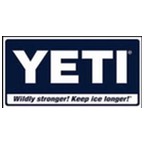Types of Turkey Calls
 Box Calls
Box Calls
Box calls create turkey sounds with the friction created by sliding the lid across the surface of the box. These calls are very convenient and capable of producing more volume than any other call.
Friction Calls
Friction calls, also known as “peg and pot” type calls, are easy to use and create lifelike turkey sounds. Friction calls usually feature a round surface, and the hunter creates sound by drawing a peg or striker across the surface. Friction call surfaces can be slate, aluminum, glass or a variety of other materials.
 Wingbone Calls
Wingbone Calls
Wingbone calls originally were made from the wingbones of a turkey, and some still are. These are a suction-type calls. Sounds are made with quick, forceful sucking motions, much like kissing the end of the call. Good wingbone calls make a hollow sounding yelp. Several variations of the wingbone call have been made from materials such as cane, bone, horn and other hollow, slender materials.
 Diaphragm Calls
Diaphragm Calls
Diaphragm calls use thin latex rubber as reed material. The reed material is held inside a horseshoe-shaped frame. The call is placed in your mouth with rounded side to the back and is pressed to the roof of the mouth with the tongue. Forcefully breathing across the reed causes the reed to vibrate and create sound, making the call sound. The calls require practice to learn to use correctly.
 Tube Calls
Tube Calls
Tube calls are similar to diaphragm calls. The reed material is fixed across top of a hollow barrel, instead of held in the mouth. Calls are typically made from plastic or wood, with latex stretched across the top half and held in place with a rubber band. The call is held against the lower lip and blown across to produce a wide range of calls.
 Push/Pull Calls
Push/Pull Calls
Push-pull turkey calls are very simple to use, and create realistic turkey sounds. A wooden or plastic box incorporates a lid that rides on a rod positioned through both sides of the box. A spring or rubber-band is used to give the paddle proper tension to run over a peg inside. Pushing and/or pulling the rod causes the paddle to scrape over the internal peg, which vibrates to make turkey-like sounds.
We would love to hear from you about your experiences with turkey calls. What’s your favorite? What’s your least favorite? Which call gets the best results?









